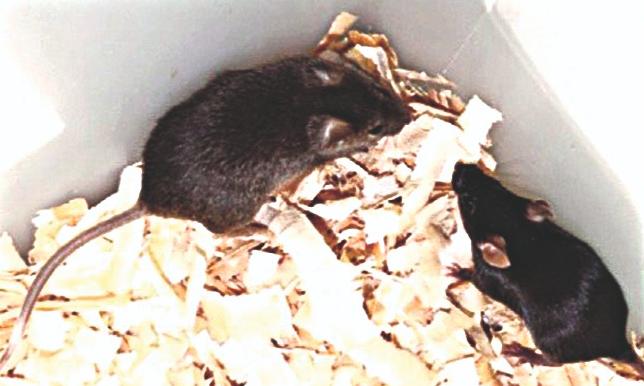In a mind-bending experiment that sounds more like science fiction than fact, researchers at the Chinese Academy of Sciences have successfully created baby mice using genetic material from two male mice, with no mother involved. Their groundbreaking study was recently published in the Cell Stem Cell Scientific Journal.
While the experiment was conducted in a lab, its implications could ripple far beyond the confines of the human mind. In many ways, sparking discussions about the future of reproduction, genetic engineering or the very definition of a family!
All In The Genes
“Typically, we need DNA from both the mother and father to produce a viable child,” explains Dr Harsh Sheth, assistant professor and head of advanced genomic technologies division, FRIGE Institute of Human Genetics. However, he notes that theoretically and under forced conditions, it is possible for both sets of DNA to come from a single parent, though this can be fatal for the foetus.
Point to note: Similar experiments have been conducted before. In a previous study, scientists successfully used genetic material from two mothers to create a mouse without involving a father, essentially producing a mouse without the use of sperm. In the latest research, led by molecular biologist Zhi Kun Li, stem cell engineering techniques were employed to push the boundaries even further.
In his research summary, Dr Li shared that such a development is not just about pushing biological limits. He opined that such endeavours lean towards understanding the fundamental rules of genetic imprinting, along with rewriting these.
Dr. Harsh highlights that the key lies in genomic imprinting. Think of this as a biological mechanism that acts like a control switch, determining which genes are turned on or off. This mechanism ensures that only one copy of a gene is active while the other remains suppressed. “The research identifies 20 crucial regions in the DNA that regulate imprinting. By removing these, it’s theoretically possible to develop a foetus using DNA from just one parent,” explains Dr. Harsh. All in all, this opens up huge possibilities in the field of DNA cloning and research.
Limited Only to Mice
While the leap is a big one, for now it is limited only to animals. Gogineni Kishore Sai, a Genetic Counsellor from Hyderabad, says, “These experiments so far have been confined only to mice.” Kishore opines that we haven’t moved to humans yet.
The reason is simple. Human imprinting is far more complex than those in rodents or mice. Another concern about such being tried on humans are the many ethical and societal concerns that follow. Indian society is yet to accept certain possibilities that science can offer. Kishore says, “Even if one overcomes technical hurdles, long-term health effects and their consequences could be enormous for humans.”
Dr Harsh opines that having such experiments tried on humans could lead to devastating diseases. He says, “It could pave the way for autism, growth anomalies or even foetal death in the womb.” Long story short: while correcting gene activity via tweaks is useful in studying lab animals. It’s wise that these be confined only to labs. Such would be disastrous in terms of people. Reason being, the effects of genetic changes are yet to be fully understood.
A Complex Matter
Although the experiment may sound like a quirky biological trick, the science behind it carries profound implications. Kishore explains, “These studies are technically complex, involving advanced gene-editing, stem cell culture, and embryology techniques, all under strict ethical supervision.”
He shares that while such experiments come with significant risks, they also offer the potential for substantial rewards, particularly in deepening our understanding of reproduction, imprinting disorders, and regenerative medicine.
Dr Harsh quips, “In terms of the Indian ethos, these are extremely challenging studies not only from the scientific point of view but also from the ethical point of view.” Point being, despite the breakthrough, there are major scientific and ethical questions one needs to bear in mind while embarking on such scientific adventures. Adding to this is the fact that the success rate of this experiment in particular was believed to be low by experts. This being primarily due to the failing of many embryos shortly after birth.
Looking Ahead
All in all, as science delves deeper into the building blocks of life, there’s still something to be said for nature taking its course, without excessive intervention from labs and experiments. For now, the concept of two men having a biological child without a woman remains confined aka limited to experimental studies only.
Kishore adds, “This study remains as a rodent-only achievement and any human applications would require decades of additional research, stringent safety testing mechanisms and societal consensus put in place.”
Yet, what is unmistakably clear is that the frontiers of biology are shifting and they’re doing so at lightning speed!
